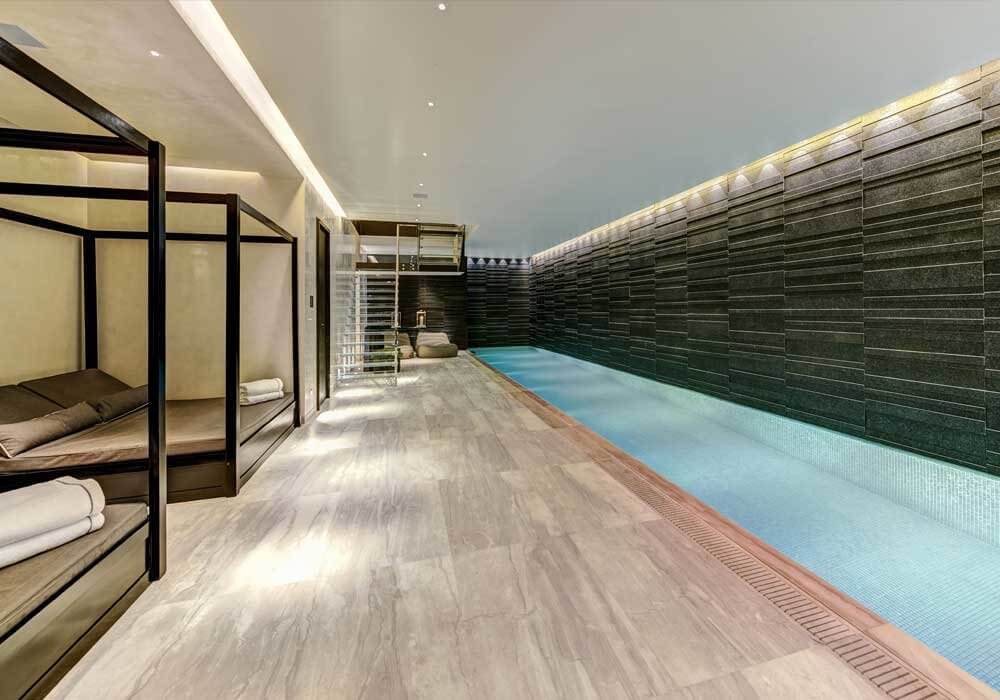
What lies beneath
15.05.19Space has long been at a premium in London and architects and developers are always looking for new ways to exploit square footage. Cue the deeper and down trend for going underground. Luke Thomas investigates
Often regarded as largely obsolete space, a locale where long defunct family furniture is stored alongside the curio collection of suitcases, many homeowners in the capital are now seeing basement square footage as a genuine option for expanding existing living space at a fraction of the cost (and hassle) of moving.
While building up continues to be the ‘go-to’ solution for many and one of the best ways of adding value and capacity to a property, the very nature and eccentricities of original architecture, combined with planning restrictions often make it difficult to extend more traditional bricks and mortar skywards.
In the search for a Plan B square footage solution - subterranean developments are becoming increasingly popular with the super-rich, providing a significant amount of additional space. So much so, the process has been labelled as “luxified troglodytism”.
The University of Newcastle’s global urban research unit has previously extracted data from planning portals for the seven London boroughs of Camden, Hammersmith and Fulham, Harringay, Islington, Kensington and Chelsea, Wandsworth and Westminster.
For prime locations in the capital - building down it seems, can greatly increase the value of an already pricey abode, as London agent and Director of Arlington Residential, Marc Schneiderman comments:
“It’s simple really. Most of a homeowner’s wealth is tied up in their property, so adding quality and space to an existing home is a great way of increasing its value. If you have the appetite and understanding and can ensure that the work is carried out correctly – the added value to your property will likely be more than the cost to build it.
“Usage of space has to be appropriate though. Take a three-storey Victorian terraced house. One of the biggest errors can be moving the kitchen into the basement. It’s tempting as it creates more space for other room types, but for the modern buyer, the kitchen is the heart of the house. Most people look for it to lead out onto outdoor space – a seamless flow into the garden.”
In what areas of London is expansion underground most common?
Hammersmith and Fulham has the greatest number – over 1,000 in the last decade. It’s also extremely popular in St John’s Wood, and in the past in Camden too.
It’s harder to get basement planning consent in Camden now however – the policy has changed due to a different water table and the desire by the council to prevent the risk of damage to houses of neighbours and tree roots. This means that properties that already have basement conversions are now very valuable in Camden as well as properties that had passed planning consent before the change of policy.
What sort of value can be added?
In prime areas, space can be valued anywhere between £1,500 – 2,500 per square foot. It’s true that basement space in itself, isn’t as valuable as other floors in the house, but properties are generally sold by agents as total square foot, not floor by floor – so properties with large, converted basements can add a lot of value. The caveat, as mentioned before, is that the space created must be highly desirable. It’s no good creating poorly lit space unless you are going solely for a media room – it’s best to make the space as bright, airy, welcoming and multifunctioning as possible.
Eric Morson, Director, Basement Masters
- Basement conversions aren’t just ideal for expanding and mproving an existing residence – some homeowners are also using them to create new properties altogether either as a prime rental opportunity or to help their children get on the property ladder.
- Digging down can provide the ideal ‘extension’ space whether it be for a games room or gym, more living space or even an extra bedroom.
- Because of the natural sound insulation that comes with having a room underground – the space is also ideal for creating a home cinema
Property focus – East London
Basement Masters turned a near-derelict three bed, two-storey terraced house in the desirable E5 postcode in East London into two flats. The original property was purchased for £355,000. Following the conversion into two apartments which included the creation of a basement level, a ground floor side addition extension and a loft space conversion, the property is now worth an estimated £1.5 million.
Property focus – Winnington Road
A stunning house that was rebuilt behind the original façade four years ago, Winnington Road provides over 10,000 square foot of accommodation. The property is set on a wide tree-lined street with a reputation for impressive homes, adjacent to the world-famous Bishops Avenue.
A fine example of a property with a brilliantly converted basement. The lower floor features a fabulous entertainment room, a gym with shower room, a cinema room with full surround sound, a staff bedroom suite, a wine cellar and a spectacular eight-car showroom.
Comment from Knight Franks
Tom Tangney of Knight Frank says: “With stamp duty hikes on more expensive properties, the cost of moving can be somewhere up to 10% of the purchase price. For householders wanting extra space, building a basement is more efficient than moving home.”
Abode Affiliates
COPYRIGHT © Abode2 2012-2024






















































































































































































































